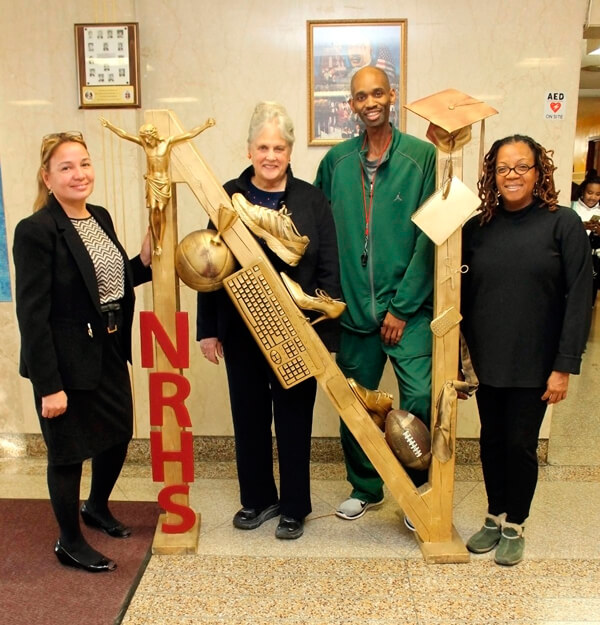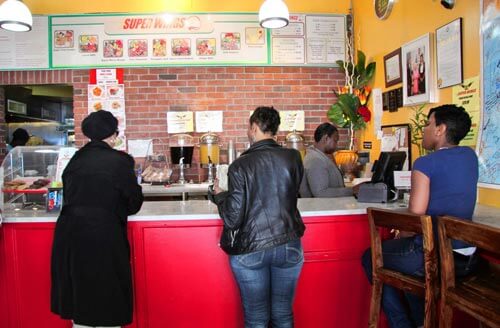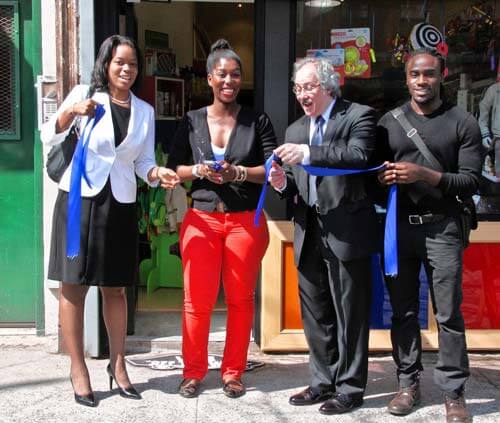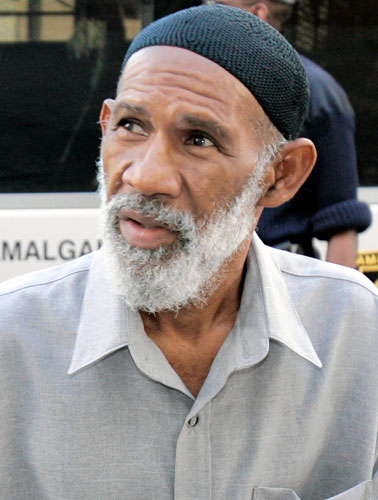This is the story of Nazareth Regional High School in Brooklyn, New York. Nazareth has been a part of the East Flatbush community for over fifty years in which they have been actively educating immigrants in the area who started out as Irish and Italians and as time progressed mostly Caribbean and of the Caribbean diaspora.
Nazareth came to the brink of closing in Fall 2012 by decree of the Brooklyn Diocese. Principal Providence Quiles, who had only been in her position for six months explained the reason for Nazareth’s near demise. “When I first took the job, I said that I was going to need three to five years to turn the school around. It had declining enrollment, financial issues; the building was really in need of tender loving care and so there were a lot of issues that needed to be dealt with. Midway through the year, the board decided that all of theses challenges were more than could be bared.”
When the news broke, it caused much distress on the students, the parents, the faculty, staff and all associated with Nazareth. Quiles described the stress felt by the community. “There was a lot of resistance from all levels from the faculty to the parents to the students and there was strong concern that the one school that was graduating kids at 98 percent in this community was going to be shut down and in only a matter of three months.”
To make matters even worse, one month prior to this announcement, beloved coach for Nazareth’s girls basketball team, Apache Paschall, unexpectedly passed away from an aggressive form of cancer. Nazareth was being hit with wave after wave of pain and grief.
A notice was sent out for a town hall meeting where parents, faculty, students and members of the community at large were able to voice their concern and opposition to closing the school. “The hardest part for us was that it seemed that we had not been given a fair chance at saving the school and we just wanted to know why,” said Quiles.
After a meeting at the school with parents and teachers and board members, Nazareth was blessed with a “fairy godmother” in the person of Sharon Patrick. She gave the school a $500,000.00 loan as a result of being convinced that Principal Quiles’ four-year plan to save the school could actually work. She came on board with the principal, got a seat on the board and helped execute the plan.
Patrick explained what moved her to such an incredible act of generosity: “If you meet the students and you meet the parents and you believe that inner city education is a huge issue throughout the country, you have to have success stories and models and more importantly models for good schools in the inner city. When I saw a school like this being closed without any real investigation as to how we can in fact turn it into a model, that bothered me just as a citizen. I believe that we owe more to these kids than that just by meeting them and seeing the possibilities for them and realizing what would happen if Nazareth was closed.”
Some would still say that this was an extreme gamble for Patrick to make on a school with no guarantee that there would be a happy ending. To this, she responded, “Well, we looked at what we needed to do as far as the four-year plan and we started that by looking at the debt that was raised and eventually the debt was reduced from over three million down to 1.2 million dollars. Then we looked at the enrollment process and decided along with the board that an enrollment number of 80 students needed to be our benchmark to stem the tide of enrollment loss. So, with all of this information pouring in and working closely with Providence, I thought this plan could be achieved. So to me, it was not as risky as it sounded.”
She and Quiles also pointed out that what has been heavily overlooked is that money for much of the debt was raised by the community PTA mothers coming together and having bake sales. Also, local politicians such as Una Clarke, Jumaane Williams, and even Mayor Bill de Blasio, who was not the mayor at the time, became interested in helping Nazareth stay alive. The kids planned marches with Nick Perry who spoke to them in their gymnasium on civil rights and encouraged them to take up the torch and march for their school. They were also able to work with the Department of Education to help bring forth money that was due to them. The endless efforts to keep Nazareth open are too much to be mentioned in one article.
Today, Nazareth remains an oasis and a pillar of strength in the East Flatbush Caribbean community. After four years, Patrick has been repaid and the school is on a good footing, with students receiving all manner of scholarships, excelling in the various athletic fields from basketball (State Champions) to football and baseball. “Our plan was to have 100 freshmen this year and we have over 100 freshmen. We have 363 students in total. Nazareth touts a 100 percent graduation rate with 98 percent of them going to college. Nazareth is alive and well,” said Quiles.
The board at Nazareth now wants to see the community reflected on the board. They want local folks to come into the school and see what is happening. Quiles explained, “This is a prime time to bring people from the community back into the school because they worked so hard and now they should be reaping the benefits of what were accomplished here.”
The story of Nazareth serves to show that through adversity and looming doom, hope springs eternal. “We’re really proud that we educate the whole child here — academically, spiritually and physically. They come in with a dream and we help to fulfill those dreams and that to me is the success of this school,” said Quiles.





















